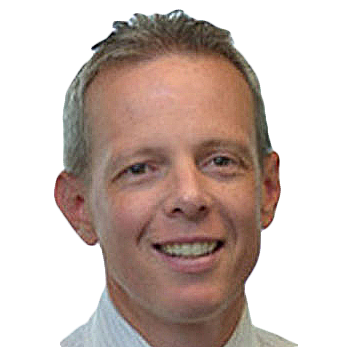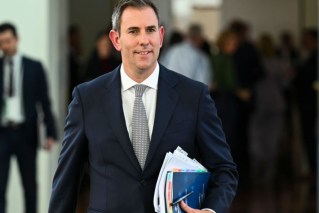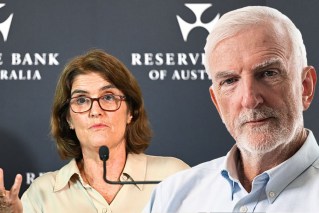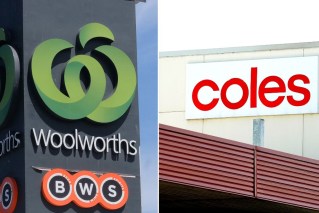Ask The Expert: How super works for non-dependants, death benefits and inheritance


It's vital to ensure paperwork on binding death nominations and inheritance are up to date and tax effective. Photo: Getty
Question 1
- I am retired, single and 63 years old with approximately $800,000 in super. I don’t own my own home. My super is in an income (pension) fund and I have a binding death benefit nomination in place for my two adult children (non-dependants). A friend recently told me that tax at the highest marginal rate is payable by my children should they receive these funds after my death. And that I can avoid this tax if I withdraw the funds and redeposit them back to my super account. This seems bizarre! Can you please explain the tax situation and advise if there is a strategy to reduce the tax. Thank you.
Yes, it is a bit odd when you step back and think ‘if I withdraw money from super and then put it back in, my beneficiaries avoid tax’.
But that is broadly how it works.
Non-tax dependants (such as adult independent children) can pay tax of up to 15 per cent (plus Medicare) on any taxable component of your super income fund, not at the highest marginal tax rate, so it’s not as bad as you have been told.
Any tax-free component, as the name suggests, is paid tax free.
So what you are doing is taking money out of the taxable component (which normally comes from employer and salary sacrifice contributions, plus earnings when it was in super) and putting it back in as an after-tax ‘non-concessional’ contribution, which goes into the tax-free component.
Now they are a few things to bear in mind.
You have to take funds out of super ‘proportionally’. This means if say 10 per cent of your current balance is made up of the tax-free component, then when you do a withdrawal 10 per cent of the withdrawal will come from this component.
The most important item to factor in is the non-concessional contribution cap.
You don’t want to take money out only to find out you can’t get it back in.
The standard annual non-concessional cap for 2023-24 is $110,000.
This is being increased to $120,000 for 2024-25.
You can also use the bring-forward provisions and make three times the annual contribution in one go. However, you could then not make another non-concessional contribution for three years.
For example, you could do $110,000 in 2024-25, then $360,000 in 2024-25 (using three times the new cap of $120,000). However, you would then have to wait until 2027-28 before making another non-concessional contribution.
You are well under the ‘Total Super Balance’ cap so you don’t need to worry about that.
It can get complex, so you may want to speak with an adviser or your super fund.
Of course, if you withdraw all your super, or if it runs out before you die, then there will be no tax to worry about for your children.
Question 2
- I am a member of an industry superannuation fund (AustralianSuper) and cannot see where l can apply for a perpetual binding beneficiary nomination other than requiring completing a new one every three years. Are such nominations available with any of the industry superannuation funds? Thanks, Craig.
Binding death benefit nominations allow you to nominate who you want your super to go to should you die, and as the name suggests, its ‘binding’ on the trustee.
This means so long as you have nominated a valid beneficiary the trustee must follow your nomination.
As you have indicated, most nominations lapse after three years and you have to do it again.
Some super funds are reluctant to offer non-lapsing binding nominations as they are worried that if you (or your beneficiaries) circumstances change you may forget to update your nomination. i.e. if you marry, become divorced, your beneficiary dies etc, don’t forget to update your nomination.
There are some industry funds that do allow non-lapsing binding nominations. These include Brighter Super, Care Super and First Super.
Question 3
- What happens with Centrelink when you receive an inheritance when you are receiving a part pension and working part time?
Once you receive an inheritance it will be assessed as an asset and if put into a financial product (such as a bank account) and deemed under the income test.
Depending on the amount of your inheritance this could result in your Centrelink benefits being reduced or stopped.
Even if you give the money away you will be still assessed as having those funds for five years.
The idea being is that you use your own resources first, up to a point, before then being paid a Centrelink benefit.
Craig Sankey is a licensed financial adviser and head of Technical Services and Advice Enablement at Industry Fund Services.
Disclaimer: The responses provided are general in nature, and while they are prompted by the questions asked, they have been prepared without taking into consideration all your objectives, financial situation or needs.
Before relying on any of the information, please ensure that you consider the appropriateness of the information for your objectives, financial situation or needs. To the extent that it is permitted by law, no responsibility for errors or omissions is accepted by IFS and its representatives.
The New Daily is owned by Industry Super Holdings








